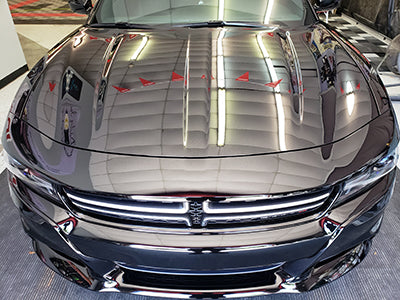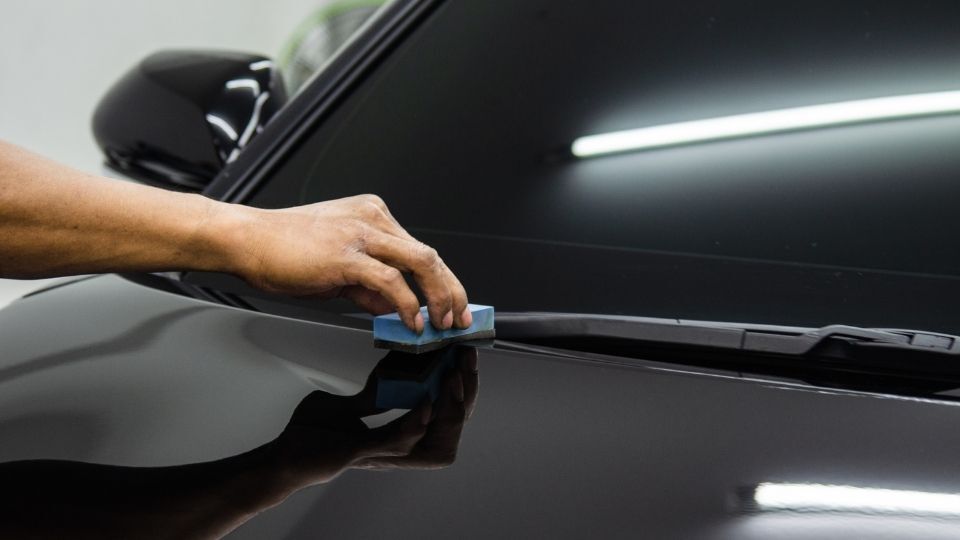Everything You Need to Know About Ceramic Coating for Cars
Everything You Need to Know About Ceramic Coating for Cars
Blog Article
Ceramic Coating vs. Conventional Wax: Which Gives Better Long-Term Security?
The debate in between ceramic coverings and conventional wax for automobile defense has amassed considerable interest amongst vehicle enthusiasts and specialists alike. While both satisfy of guarding paint, their distinctions in toughness, application, and lasting maintenance prices may affect a consumer's option. Ceramic coverings boast premium durability and resistance to ecological factors, yet the intricacy of their application questions regarding access and usefulness. As we check out these contrasting choices, it becomes important to consider not just the instant benefits but additionally the effects for vehicle treatment in time.
Review of Ceramic Covering
Ceramic layer has actually gained significant appeal amongst auto lovers and detailers alike because of its advanced safety qualities. This cutting-edge modern technology is designed to create a durable, hydrophobic guard over an automobile's paint surface area, considerably boosting its resistance to environmental pollutants such as dirt, UV rays, and chemical discolorations. Unlike traditional wax, which gives a temporary layer of security, ceramic layers bond at a molecular level with the paint, using resilient resilience-- frequently expanding past two years with correct upkeep.
The application procedure includes meticulous prep work of the automobile's surface, including cleaning and polishing to make sure ideal attachment. When applied, the layer treatments to create a durable layer that not just adds deepness and gloss to the paint however also simplifies maintenance. With its hydrophobic buildings, ceramic finishing permits water and dust to glide off more conveniently, minimizing the frequency of cleans and minimizing the threat of swirl marks.
Additionally, ceramic coatings are readily available in different formulations, allowing individuals to choose products customized to their details needs and choices. In general, ceramic finishing represents a substantial innovation in paint defense modern technology, delivering exceptional performance contrasted to standard alternatives.
Summary of Traditional Wax
Traditionally considered as a staple in auto care, wax offers as a popular selection for those looking for a straightforward approach to boost and secure their automobile's paint - ceramic coating. Automotive wax generally comprises all-natural active ingredients, such as carnauba, or synthetic substances, created to develop a safety layer externally of the paint. This layer not only boosts the vehicle's gloss and shine but also provides an obstacle versus environmental impurities
The application of wax is usually straightforward, making it accessible for both specialists and do it yourself fanatics. It can be used by hand or machine, enabling versatility in the detailing procedure. As soon as used, wax requires a healing period, after which it sets to form a protective shell. Wax is additionally recognized for its capacity to drive away water, advertising a beading result that aids in the avoidance of water places and corrosion.
However, while wax works for enhancing the aesthetic appeal of a lorry, it is essential to note that the security it supplies may demand a lot more constant reapplication contrasted to alternate products, such as ceramic layers. On the whole, traditional wax stays a popular option for those prioritizing simplicity of usage and prompt aesthetic renovation.
Durability and Longevity Comparison
While both ceramic layers and standard wax deal safety advantages for automotive paint, their sturdiness and longevity differ significantly. Conventional wax, normally made from all-natural carnauba or artificial polymers, normally provides a safety layer that lasts around 3 to 6 months. This relatively short life expectancy requires normal reapplication to maintain optimum security.
On the other hand, ceramic coatings are engineered from sophisticated nanotechnology, forming a covalent bond with the paint surface. This results in a robust, hydrophobic layer that can withstand for 2 to five years, depending on the product and environmental problems. The superior longevity of ceramic finishings is credited to their chemical framework, which offers enhanced resistance to scrapes, UV rays, and oxidation.

Protection Versus Environmental Elements
Shielding a vehicle's paint from environmental elements is critical for maintaining its look and worth gradually. Vehicles are constantly exposed to a variety of elements, including UV rays, bird droppings, tree sap, acid rainfall, and road gunk, all of which can endanger the integrity of the paintwork.
Ceramic coatings provide a robust protection against these environmental aggressors. Unlike conventional wax, which can degrade promptly under UV exposure, ceramic coverings form a long lasting, hydrophobic layer that stands up to the dangerous effects of sunlight and environmental toxins. This innovative innovation produces a chemical bond with the vehicle's surface area, supplying superior defense that lasts for years, even in extreme Home Page problems.
Standard wax, while easier to use, usually needs regular reapplication and supplies restricted resistance to pollutants and UV rays. With time, it can break down, leaving visit their website the paint at risk to scrapes and oxidation. In comparison, ceramic finishings preserve their protective high qualities longer, significantly reducing the risk of paint damages and making certain that the vehicle keeps its visual allure. Consequently, ceramic coverings are progressively identified as the premium option for long-term defense against ecological variables.
Application and Maintenance Distinctions
The techniques of application and succeeding upkeep for ceramic coverings and typical wax differ substantially, impacting the general user experience and effectiveness of each item. Ceramic coatings call for an even more detailed application process, usually including surface area preparation that includes washing, decontaminating, and polishing the car. When the surface prepares, the ceramic coating is used in a regulated atmosphere, often needing professional knowledge to make sure proper curing and bonding to the paint.

While both products enhance vehicle look, the longer-lasting defense offered by ceramic finishes might justify their initial financial investment, in spite of the more requiring application process. Conversely, typical wax remains a prominent choice for those seeking an easier, albeit short-term, remedy.

Final Thought
Finally, ceramic coatings demonstrate substantial advantages over traditional wax in regards to sturdiness and environmental you can try these out management. With a life-span expanding 2 to 5 years and remarkable resistance to UV rays, dust, and chemical spots, ceramic finishes supply an extra efficient option for long-lasting car maintenance. The application procedure might require specialist experience, the resulting expense savings and lowered regularity of reapplication underscore the worth of ceramic finishes for those seeking optimal automobile security.
The debate in between ceramic finishings and traditional wax for lorry security has actually gathered significant interest among auto lovers and professionals alike. Unlike typical wax, which supplies a short-term layer of protection, ceramic layers bond at a molecular degree with the paint, using long-lasting longevity-- commonly prolonging beyond 2 years with appropriate upkeep.
While both ceramic coverings and typical wax offer safety advantages for automobile paint, their durability and durability differ substantially. For vehicle lovers looking for long-lasting defense, ceramic coverings provide an engaging advantage over standard wax items.
In conclusion, ceramic finishings show substantial advantages over conventional wax in terms of durability and environmental security.
Report this page